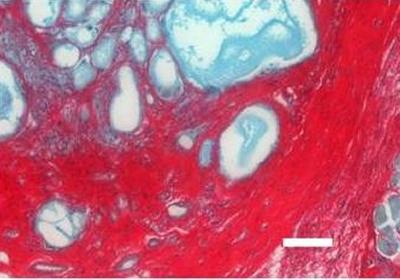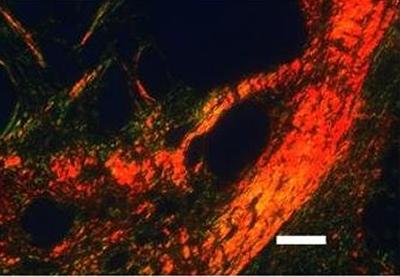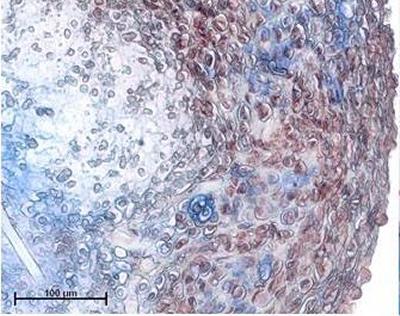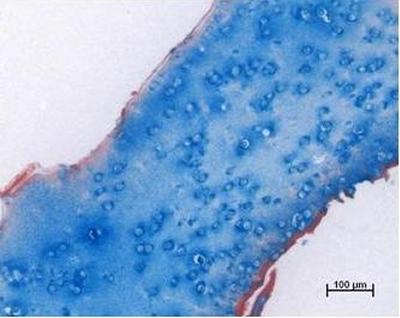A multidisciplinary approach integrating expertise from Medicine, Biology, Chemistry, Engineering, Mathematics and Physics underpins the rapidly evolving field of Tissue Engineering and Regenerative Medicine.
Tissue engineering encompasses research into stem cell biology and culture under defined conditions either for cell expansion or differentiation into specific lineages stimulated by appropriate growth factors, followed by cell seeding in/on 3-D biodegradable scaffolds to generate robust tissue explants, which are capable of fully and functionally integrating with the host tissues upon implantation at the sites of injury. Additionally, tissue engineering systems can be applied as ex vivo models for elucidating developmental processes during in vivo tissue growth, screening novel compounds/ drugs and studies of cells/ tissues under normal and pathological conditions.
The Bone and Joint Research Group interests in tissue engineering are primarily centred on harnessing the potential of skeletal stem cells (whether derived from embryonic or fetal and adult sources) for the development of unique bioengineering approaches for new cartilage and bone formation for orthopaedic application. This involves drawing together the elements of i) progenitor cell differentiation (specifically the control of mesenchymal stem/progenitor cell differentiation and plasticity), ii) generation of osteoconductive and inductive smart scaffold/materials (including the use of natural biomimetic environments and self -assembling scaffolds with appropriate extracellular matrix cues) and, iii) cell signal/growth factor biology to examine tissue regeneration. Other areas of active research interest within the group include differentiation of pluripotent stem cells along the mesenchymal lineage by culture on nanoscale surfaces as well as angiogenesis/ revascularisation in tissue development.
Research within the group is based on a strong multidisciplinary approach that involves close collaborations with diverse disciplines (Engineering Sciences, Electronics, Chemistry and Mathematics) in the University and, biomaterials and tissue engineering groups in the UK as well as international collaborations in Germany and the USA.
Musculoskeletal tissue engineering
(
Richard Oreffo
)
Cartilage tissue engineering
(
Rahul Tare
)
Bone and skin regeneration
(
Nick Evans
)
Mathematical and computational techniques for analysis of stem cell behaviour and tissue development
(
Ben MacArthur
)



